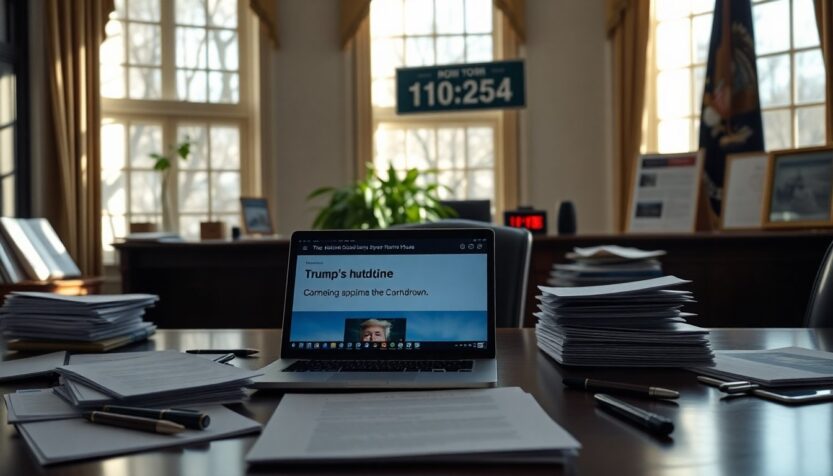The ongoing government shutdown has prompted a significant shift in messaging from the White House. President Donald Trump is utilizing the official website to convey a narrative that blames Democrats for the impasse. The site features a prominent banner stating, “Democrats have shut down the government,” along with a countdown timer tracking the duration of the shutdown. This tactic reflects the broader political strategies employed during this contentious period.
Approximately 1.4 million federal workers are affected, with only half deemed essential and working without compensation, while the remaining employees have been furloughed. The shutdown has disrupted government operations, yet the administration appears focused on redirecting public frustration towards its political opponents.
Website updates as a political tool
In a notable development, the White House website has been revised to include a history of its grounds, accompanied by contemporary interpretations that favor the current administration. Recently added sections spotlight major events related to Trump’s presidency, such as ongoing renovations to the East Wing for a new ballroom. This appears to be an effort to reshape public perception of the White House’s history amid political turmoil.
Reimagining historical events
The timeline on WhiteHouse.gov features entries that are historically significant, including George Washington’s selection of the site in 1791 and the rebuilding following the 1814 fire. Controversially, the timeline also addresses recent administrations. For example, Bill Clinton’s affair with Monica Lewinsky is presented in a manner that emphasizes scandal over context, suggesting a deliberate choice to tarnish the reputations of past Democratic presidents.
Additional entries reference Barack Obama’s interactions with the Muslim Brotherhood, framing them within a context of extremism. Meanwhile, notable achievements such as Melania Trump’s South Lawn tennis pavilion are highlighted as major events, overshadowing more pressing issues like the COVID-19 pandemic. This selective curation of history raises significant questions about the intent behind these updates—are they educational, or merely a form of political weaponization?
The implications of political messaging
The updates have sparked discussions online, with Trump administration officials, including Kaelan Dorr, promoting these changes as “easter eggs” for history enthusiasts. Critics, however, argue that such updates serve a purpose beyond documentation; they are part of a calculated strategy to manipulate historical narratives to favor the current administration and undermine Democrats.
Missing narratives and accountability
Significantly absent from the updated timeline are references to key events that could implicate Trump, such as his two impeachments or Nixon’s resignation following the Watergate scandal. This omission suggests a reluctance to acknowledge moments that could weaken the constructed narrative. The selective nature of these updates raises concerns about the integrity of the information presented on an official government platform.
Moreover, Trump’s tactics during the shutdown, particularly his accusations against Democrats, have become central to his messaging. He asserts that Senate Democrats, led by Chuck Schumer, are holding the government “hostage” and calls for immediate action to reopen federal operations. This rhetoric aims to rally his base while framing Democrats as obstructive forces against a functioning government.
Controversial strategies in the political landscape
The ongoing conflict between the administration and its critics reflects a broader trend in contemporary politics, wherein digital platforms serve as battlegrounds for ideological disputes. Trump’s actions during the shutdown underscore how political narratives are crafted and disseminated through official channels, blending governance and campaigning.
As the shutdown persists, the implications of this digital warfare become increasingly evident. The use of the White House website to disseminate politically charged content raises ethical questions regarding the government’s role in shaping public perception and the historical record. In an era where information is readily accessible, the responsibility to provide accurate and unbiased content becomes even more critical.
Approximately 1.4 million federal workers are affected, with only half deemed essential and working without compensation, while the remaining employees have been furloughed. The shutdown has disrupted government operations, yet the administration appears focused on redirecting public frustration towards its political opponents.0






